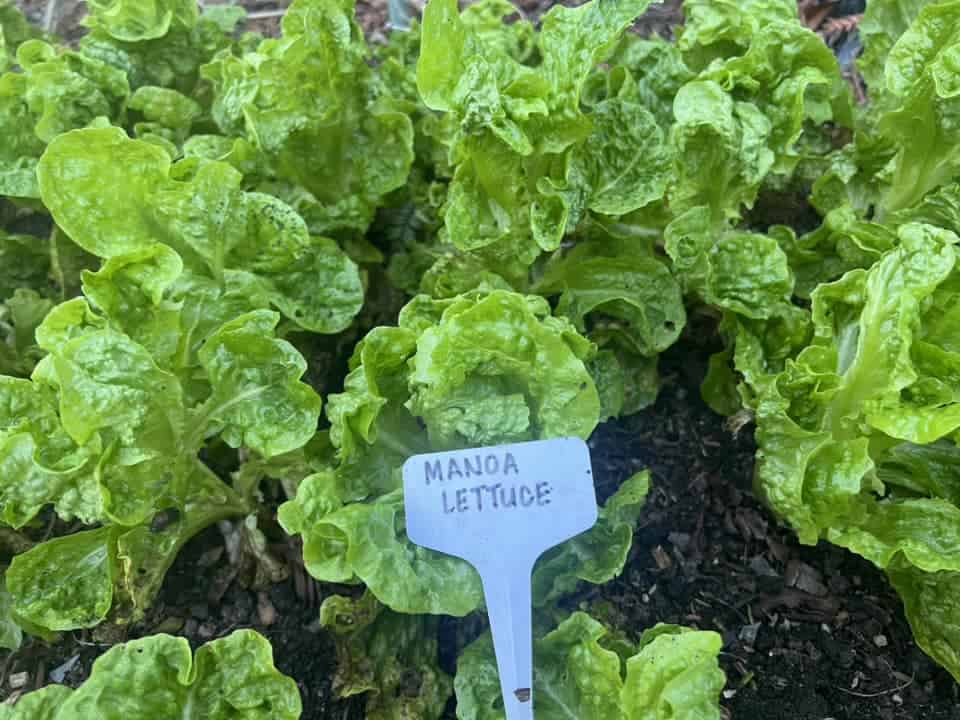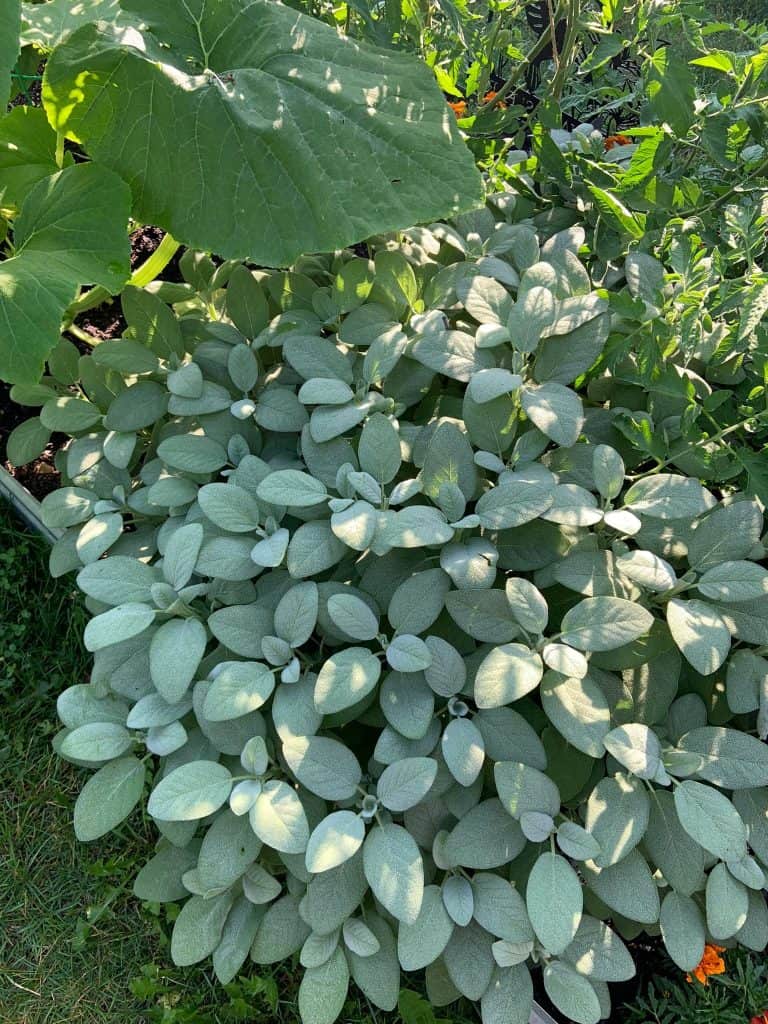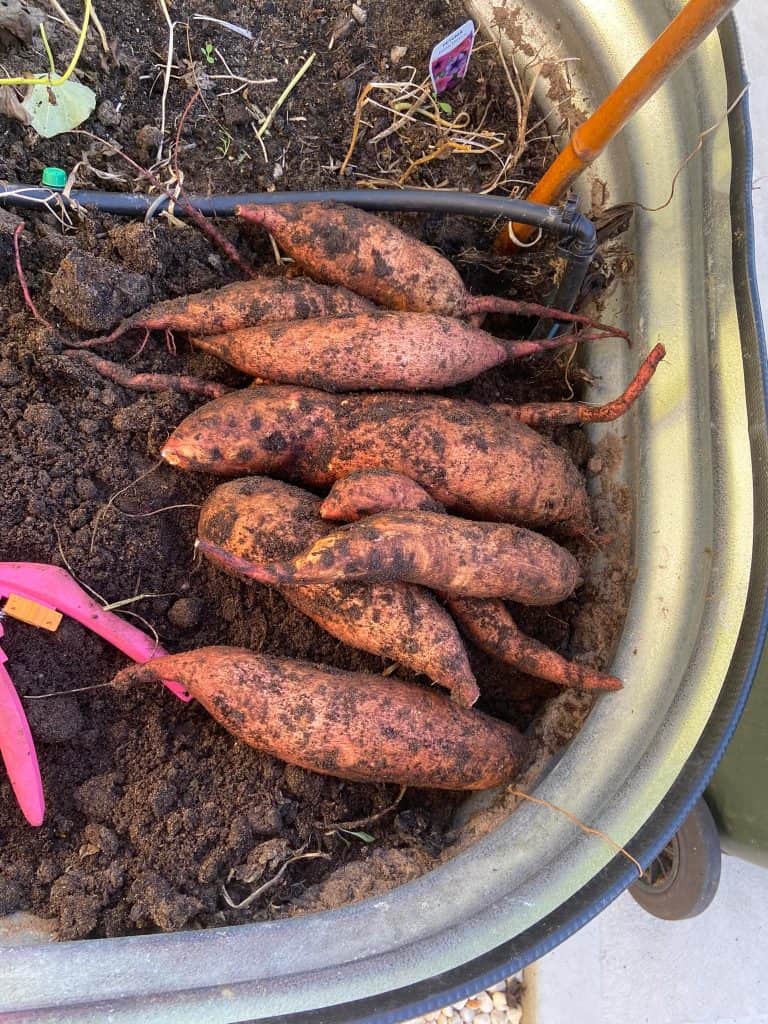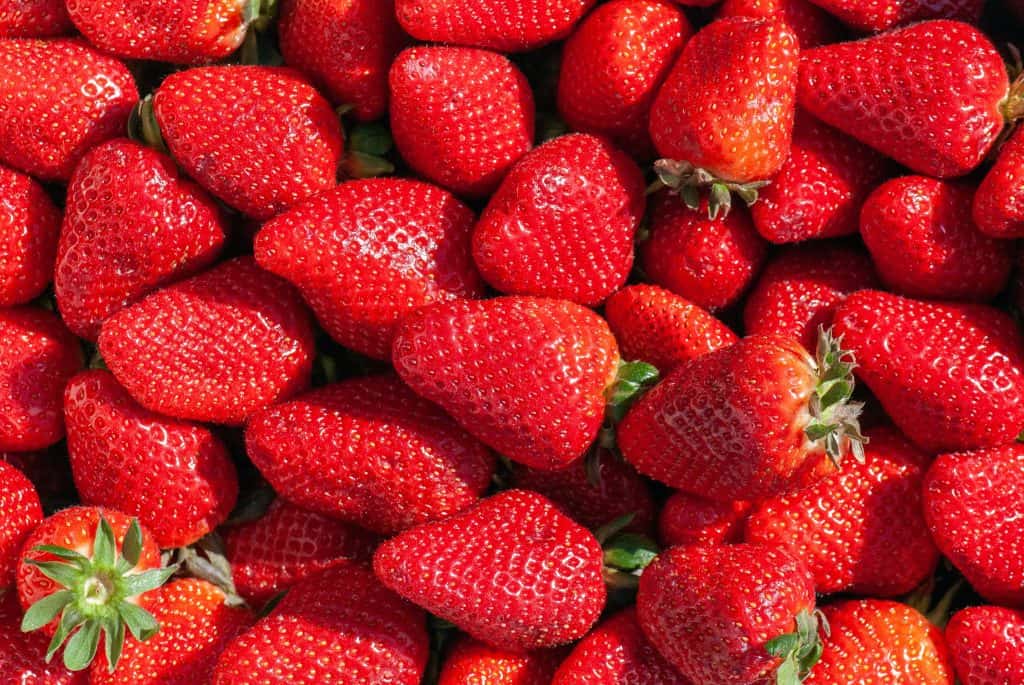Strawberries are greedy little sun-lovers. Give them good soil, steady water, and a spot they can stretch out in, and they’ll reward you with those sweet, red jewels you wait all spring for.
What you need to know is: they don’t like to grow alone. Or rather, they do better with the right neighbors.
Some plants play really well with strawberries – quietly warding off pests, pulling in pollinators, or just minding their own business without competing. Others? Not so much.
A few crops can stress them out, hog nutrients, or drag in the kind of diseases that wipe out your berry crop before you’ve even had your first bowl of shortcake.
This guide’s got you covered on both ends: the 10 companion plants that help strawberries thrive, and the 5 you definitely want to keep far, far away.
Let’s get into it!
10 Best Companion Plants for Strawberries
These plants play nice with strawberries – helping them grow better, stay healthier, and yield more fruit. Add a few of these to your garden plan for a naturally stronger berry patch.
1. Alliums (Chives, Leeks, Onions, Garlic)

Strong-smelling, low-maintenance, and weirdly good at multitasking. Alliums are like the silent guardians of the strawberry patch.
Their sharp scent throws off slugs, aphids, and a bunch of other leaf-chewing troublemakers.
There’s even some chatter among gardeners and researchers that alliums (especially garlic) might help hold off fusarium wilt, a fungus that can flatten strawberry plants before they ever get going.
And if you let your chives bloom? They bring in pollinators like it’s their full-time job.
Stick green onions or garlic between your strawberry rows. No fuss, no fighting for root space. They’re quiet companions. The good kind.
2. Asparagus

This one’s more of a cohabiting situation than a tag-team effort but it works.
Both asparagus and strawberries are perennials that show up early in the season. But their root systems? Totally different. Asparagus goes deep. Strawberries sprawl just below the surface. So they’re not competing underground, which is a win.
Visually, though, you’ve got to plan it right. Asparagus gets tall and fluffy.
Plant strawberries in front, where they can still catch the sun without getting swallowed in asparagus shadows. It's like layering plants by height in a raised bed, but in the ground.
And hey – both crops come back every year. You’re setting up a long-term relationship here, not just a one-season fling.
3. Spinach

This one’s sneaky – in a good way.
Spinach pulls double duty: it’s compact (so it doesn’t hog space or sunlight), and its broad, dark leaves can actually hide your strawberries from hungry birds. Like camouflage, but edible.
It also happens to share growing preferences with strawberries—cool weather, consistent moisture, loose soil.
And then there’s the whole saponin thing: spinach naturally produces these compounds that repel certain pests. That’s a win for any nearby plant.
It slips right into any layout – containers, garden beds, you name it. Zero drama. Quietly helpful.
4. Lettuce

This one’s for early-season gardeners who want to get more out of the same space. Lettuce and strawberries both thrive in cool weather, and they don’t step on each other’s toes.
Leaf lettuce in particular is useful – it grows out and up just enough to shield strawberries from birds, without blocking the sun. Think of it as a soft, leafy umbrella for your berries.
It grows fast, it’s shallow-rooted, and it plays nice in tight spaces. Also? You can eat it way before the strawberries are ready. Early harvest, then make room. Perfect.
5. Dill

Dill’s not just for pickles – it’s a stealth defender in the garden.
Once it flowers (or bolts), dill draws in beneficial insects like hoverflies. Their larvae are basically aphid assassins. Not a bad ally to have near your strawberries.
Plus, dill has this light, feathery scent that confuses pests. It’s like putting up a bug-smoke screen. The timing matters, though: dill’s real benefits kick in during its flowering phase.
So keep planting it in small batches through spring and early summer to keep the blooms coming.
Just make sure it doesn’t get too tall and throw shade on your strawberries. Tuck it in at the edges or corners – close enough to help, but not crowd.
6. Sage

Sage pulls its weight in ways most herbs can’t.
It’s got one of those strong, punchy scents that throws a wrench in the plans of a bunch of strawberry enemies – snails, slugs, flea beetles. They don’t like the smell. So they leave.
And when sage blooms? It becomes a pollinator magnet. Bees, mostly, but also a few beneficial bugs that just like to hang around healthy ecosystems.
More visitors = better berry pollination. It’s not complicated.
A quick heads-up: sage can get bushy if you don’t keep an eye on it. So don’t wedge it too close to your strawberries. Give it its own corner, let it do its thing.
7. Borage

Borage is the friend who shows up, makes everyone better, and then looks cool doing it.
It’s loaded with nectar – so it brings in pollinators, hoverflies, parasitic wasps, damsel bugs… basically every “good guy” insect you want nearby. And here's the kicker: borage isn’t just good for insects.
It’s good for the plants around it, too. For reasons not entirely nailed down, it just seems to boost growth in strawberries and a bunch of other crops.
Its blue star-shaped flowers are edible, and the leaves smell like cucumbers. Which, depending on your taste, is either charming or weird – but either way, it adds personality to the garden.
Let it sprawl a little. It’s not overly aggressive, but it does like space.
8. Thyme

Thyme is the quiet workhorse of the herb world – and in a strawberry bed, it does more than most people give it credit for.
When it flowers, it attracts syrphid flies, whose larvae snack on aphids like they’re candy. So if you’ve got pest issues, thyme becomes a subtle solution. No sprays, no traps – just letting nature take its course.
Plus, thyme grows low to the ground, which makes it perfect as living mulch. It holds in moisture, blocks weeds, and keeps soil from washing away during heavy rain. All while smelling incredible when you brush past it.
Tuck it along the edges of your strawberry bed. Let it fill the gaps. It’ll stay out of the way and quietly handle business.
9. Marigolds

Marigolds are garden classics for a reason. Their smell is… kind of intense, sure – but it sends the right message to pests. Deer, rabbits, thrips, and even root-knot nematodes don’t want anything to do with them.
French marigolds go a step further – they produce a compound in their roots that’s toxic to nematodes.
That’s a big deal for strawberries, whose roots are vulnerable. Some gardeners plant them as a trap crop, basically drawing the bad stuff away from the strawberries.
If you’re planting marigolds right in your strawberry bed, go with dwarf varieties. They won’t hog light, and they’ll still do their job. Think of them as tiny security guards with floral uniforms.
10. Yarrow

Yarrow is one of those low-key power players.
It brings in pollinators, sure – but it also attracts lacewings, ladybugs, and hoverflies. Those insects don’t just look cool – they straight-up annihilate pests like aphids and spider mites.
Its foliage has a strong, earthy scent that some pests apparently can’t stand. And once established, yarrow’s a perennial, so you don’t have to keep replanting. Just give it some space and let it handle the heavy lifting.
And aesthetically? The flat, daisy-like blooms pop against strawberry leaves. Functional and photogenic. Always a nice combo.
5 Worst Companion Plants for Strawberries
Not all plants make good neighbors. These are the ones that compete, crowd, or attract pests—keep them far from your strawberries to avoid unnecessary trouble.
1. Tomatoes

At first glance, they seem like a decent match. They both like sun, rich soil, and regular watering. But put them side by side? You’re asking for trouble.
Tomatoes are magnets for verticillium wilt – a soil-borne fungus that also happens to love strawberries.
Once it’s in the ground, it’s hard to shake. And since both tomatoes and strawberries are susceptible, the disease doesn’t just stick around – it spreads.
There’s also the issue of nutrient competition. Tomatoes are heavy feeders. They’ll strip the soil bare if you let them. That leaves your strawberries stressed, hungry, and a lot more vulnerable to everything else.
Bottom line: keep them in separate beds. Preferably far apart.
2. Eggplant

Another nightshade, another bad match. Eggplants share most of the same issues as tomatoes – especially when it comes to verticillium wilt.
They also attract similar pests: spider mites, aphids, flea beetles. And if those bugs move in, strawberries don’t stand a chance.
You’re not doing either crop a favor by planting them together. They’re better off with different neighbors.
3. Potatoes

Potatoes are sneaky in how much trouble they can cause. They’re also prone to verticillium wilt, and their underground growth habit makes them hard to monitor until something’s already gone wrong.
They’re also serious nutrient hogs. Like, vacuum-cleaner level. Potatoes need a ton of potassium and nitrogen to produce all that tuber bulk – and they’ll happily suck it out of the soil your strawberries are trying to grow in.
On top of that, harvesting potatoes means disturbing the soil a lot, which is terrible news for the shallow, sensitive roots of nearby strawberries.
Just… don’t do it.
4. Peppers

Same family as tomatoes and eggplants, and – surprise – they bring the same baggage. Verticillium wilt? Check. Pest overlap? Check. Nutrient competition? Absolutely.
Peppers might not seem like obvious threats, especially the smaller varieties. But the issues start below the surface, and by the time they show up above ground, it’s too late.
They’re fine elsewhere in the garden. Just not near your berries.
5. Brassicas (Cabbage, Kale, Cauliflower, etc.)

This one’s a bit different. Brassicas (the whole cabbage family) aren’t disease carriers the way nightshades are. But they just don’t get along with strawberries.
There’s a kind of mutual stunt going on when you plant them close together. The strawberries don’t grow well. The brassicas don’t either. No one’s really sure why – allelopathy, maybe? Root chemistry stuff? – but the result is always the same: sad plants.
If you’re planning a mixed bed, keep brassicas and strawberries in separate zones. They’re not enemies, exactly. They just don’t vibe.
Use Smart Plant Pairings to Protect and Boost Your Strawberry Harvest

Growing strawberries isn’t just about the berries – it’s about who you plant them with. Companion planting for strawberries is simple garden smarts.
Some plants help strawberries thrive by attracting pollinators, repelling pests, or improving soil. Others just get in the way.
Garlic and chives keep pests off your berries. Yarrow invites ladybugs. Spinach acts as a living mulch. Every “good neighbor” on this list offers a clear benefit. And the five “bad companions”? They’re trouble – crowding your patch or spreading disease.
Treat your garden like a community. Pair your strawberries with plants that support them, and you’ll be rewarded with a sweeter, healthier harvest.
Frequently Asked Questions (FAQs)
Got questions about growing strawberries with companion plants? Here are some of the most common things gardeners wonder about – answered simply and clearly to help you get the most out of your strawberry patch.
1. Can strawberries and basil be planted together?
Technically yes, but it’s not the best combo. Basil prefers slightly different soil and spacing. It won’t harm strawberries, but it won’t do much to help them either.
2. How close should companion plants be to strawberries?
Close enough to share benefits, but not crowd. A few inches apart for small herbs like thyme or chives. Larger plants like marigolds or borage should be set just outside the main strawberry row.
3. Are there any flowers that attract pests to strawberries?
Some overly fragrant or heavily hybridized flowers can draw pests instead of helpful insects—especially if they don’t produce much nectar. Stick to insect-friendly blooms like yarrow and borage.
4. Do companion plants affect the taste of strawberries?
Nope. They won’t change the flavor of the berries. But they can improve pollination and plant health—which often leads to sweeter, juicier fruit.
5. What’s the best layout for planting strawberries with companions in a small garden?
Think in layers: low growers like thyme or lettuce between berry plants, mid-height herbs (like sage) on the edges, and tall bloomers (like dill or borage) in the corners. Keep nightshades far away.
Ready To Transform Your Garden?
Are you looking for the best way to layout your garden beds? Maybe you're feeling a bit stuck on how to make the most of your space?
We’ve got you covered! Check out our 101+ Garden Bed Layout Ideas for your next raised bed project. This guide is filled with creative and practical ideas that can help you design a garden that fits your style, whether you’re just starting out or have been gardening for years.
Get your copy today and get inspired to bring your gardening dreams to life.

